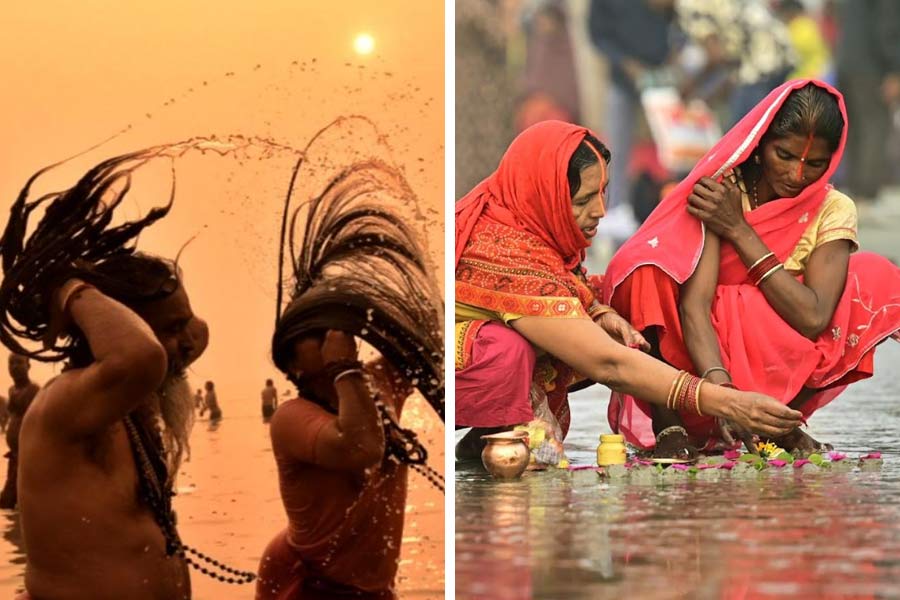 Wednesday, 15 January 2025
Wednesday, 15 January 2025
 Wednesday, 15 January 2025
Wednesday, 15 January 2025
After India’s underwhelming performance in Australia, the BCCI has decided to play the strict parent in the dressing room. Reports indicate that the BCCI will now allow wives and girlfriends (WAGs) to join players for only two weeks on tours exceeding a month.
For a team used to having family around, could this be a culture shock? Many critics have argued that the leniency of the past few years had turned overseas tours into family-friendly affairs.
But this isn’t the first time a sports team has tried to focus on discipline, training and winning by leaving love at home.
From cricket to football and even Olympic disciplines, the theory has been fewer distractions equal better performance.
The results, as history shows, have ranged from triumphant to tumultuous.
BCCI’s on-again, off-again WAG policy
Before 2018, the BCCI often implemented a no-WAGs policy. That changed when Virat Kohli, married to Bollywood star Anushka Sharma, advocated for a more player-friendly approach.
Under his captaincy, the rules softened. WAGs could accompany players for longer stretches, from South Africa to England, and even during the 2019 World Cup. But after India’s semi-final loss to New Zealand, whispers began that the distractions had outweighed the benefits.
Then came the pandemic. Players’ families gained access to the bio-bubbles, fostering emotional stability during difficult times. Post-COVID families stayed a regular feature on tours.
PCB's WAG gamble
In 2019, the Pakistan Cricket Board (PCB) implemented a no-WAGs policy during the ICC World Cup. After suffering a 4-0 ODI series loss to England just before the tournament, the PCB went for drastic measures. The PCB barred families from accompanying players, except under exceptional circumstances.
The decision left several players disgruntled. And while Pakistan staged an impressive comeback mid-tournament, beating favourites like England, their inconsistent performances meant they failed to make the semi-finals. Critics later questioned whether the isolation played a part in the team’s inability to sustain momentum.
FIFA World Cup 2006: WAG with a touch of glam
Few episodes were as infamous as England’s 2006 World Cup campaign. The team’s WAGs, including Victoria Beckham and Coleen Rooney, descended on Germany in high fashion, turning the small town of Baden-Baden into a paparazzi circus. Tabloids lapped up their extravagant shopping trips and nights out, while the players underperformed on the pitch.
The England football team in 2006 campaign was one of the best in its history, comprising greats like Steven Gerrard, Rio Ferdinand and Frank Lampard.
The fallout led to a major shift in the English FA’s approach. By the 2010 World Cup, the English FA implemented stricter policies, keeping WAGs away. The change didn’t lead to silverware but reduced off-field distractions.
Brazil’s Copa America success story
Brazil’s triumph at the 2019 Copa America stands out as a textbook case of WAG bans working wonders. The Brazilian Football Confederation restricted partner visits during the tournament, and the team responded by lifting the trophy. The players later credited the focused environment for their success.
Germany at FIFA 2022
Unlike blanket bans, Germany tried a balanced approach during the FIFA World Cup in Qatar. Families were allowed brief visits at specific intervals; ensuring players didn’t feel isolated. But their early exit from the tournament left fans questioning whether the policy struck the right balance between focus and support.
London 2012: Australia's sinking spirits
In 2012, Australia’s swimming team took a hard line, banning athletes’ partners from entering the Olympic Village. The decision backfired. Several swimmers openly criticised the policy, citing feelings of loneliness and demotivation. Morale plummeted, and the team’s medal tally fell short of expectations.
Focus or fallout?
The rationale behind these bans is straightforward: fewer distractions, more focus.
For some teams, family time can be a welcome stress reliever during gruelling tournaments. For others, it can divert attention. It’s a delicate balance, one that depends on team culture, individual preferences, and the nature of the sport itself.
The BCCI’s decision comes at a time when mental well-being is gaining recognition in global sports. Critics might question if this approach could backfire, creating a sense of isolation among players. After all, who wouldn’t want their biggest cheerleaders by their side during tough times?
As India gears up for its next big challenge, the Champions Trophy, all eyes will be on the BCCI’s no-WAGs policy. Will it make Team India sharper and more focused, or will the dressing room turn into a sitcom of discontent?
One thing’s for sure: while the players may leave love at home, the debate about focus versus morale will be tagging along, like an unwanted guest.
So, what do you get when you take the wives and girlfriends out of the equation? A lot more focus... and possibly a lot more drama.







